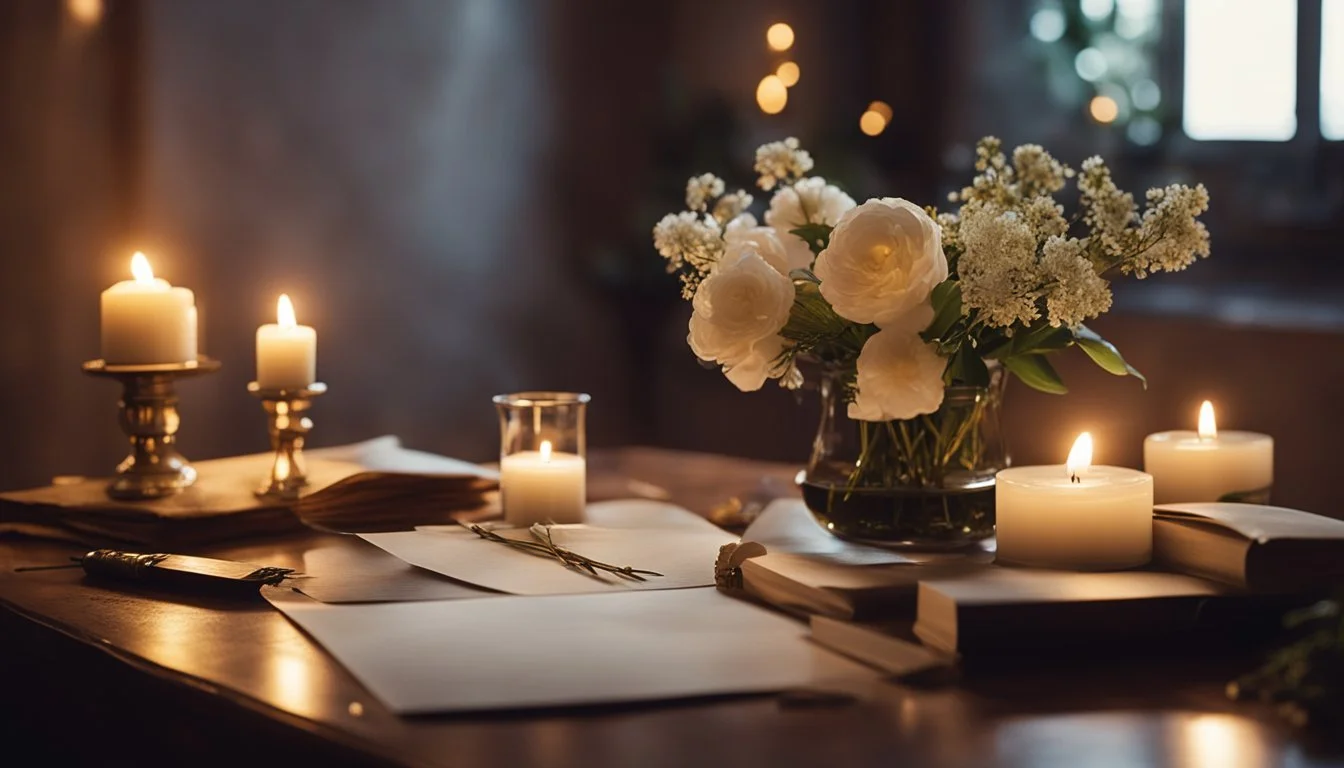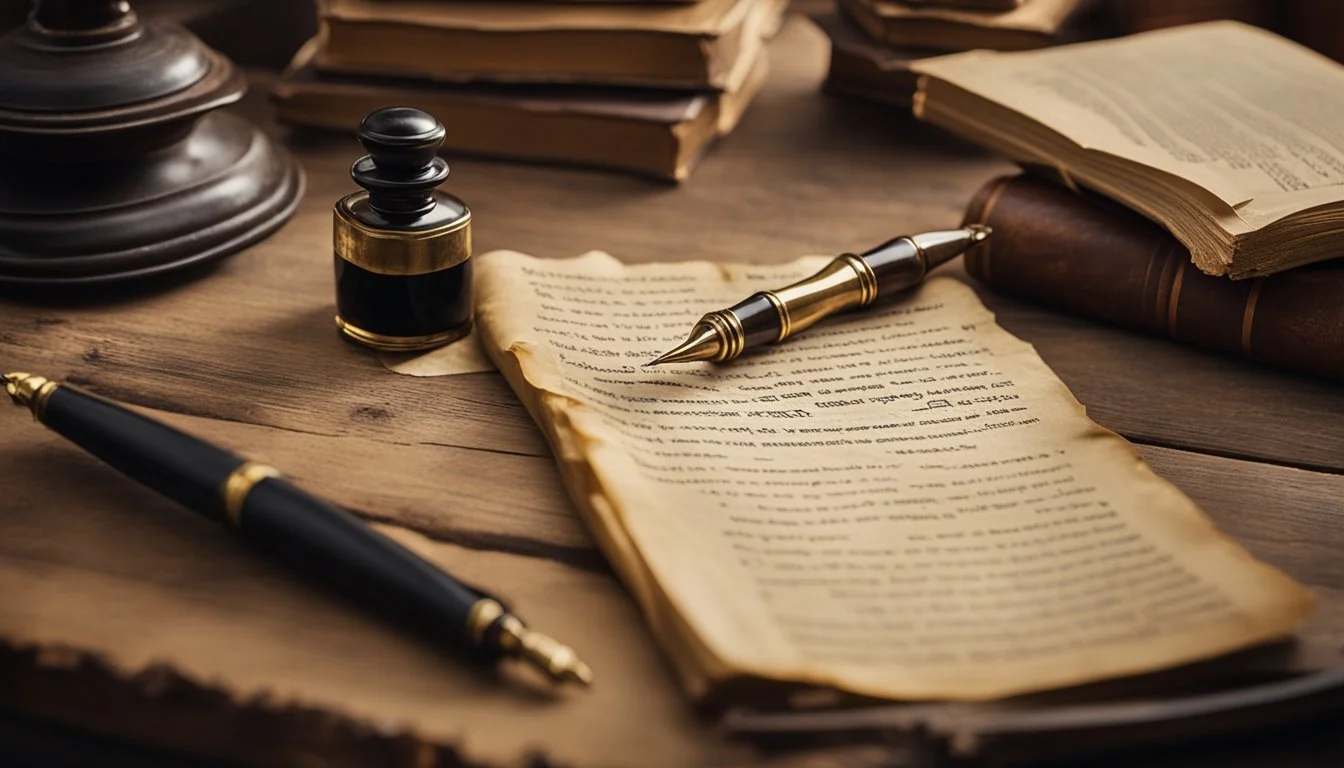7 Documentaries That Showcase Love Stories of Historical Figures
Romantic Tales from the Past
Documentaries have long been a powerful medium for exploring the lives of historical figures. They offer viewers a unique opportunity to delve into the personal experiences and relationships of notable individuals from the past. These films provide a window into the human side of history, revealing the intimate details and emotional depths that often get overlooked in broader historical narratives.
Love stories of historical figures are particularly captivating, as they showcase the universal nature of romance across time and cultures. From ancient rulers to modern icons, these documentaries highlight the personal connections that shaped both individual lives and world events. By examining the romantic relationships of influential figures, audiences gain a more nuanced understanding of history and the motivations behind pivotal moments that changed the course of human civilization.
1) The Duchess and the Duke: Marie Antoinette & Louis XVI (2006)
This documentary explores the complex relationship between Marie Antoinette and Louis XVI, the last monarchs of France before the French Revolution. The film delves into their arranged marriage, which took place in 1770 when Marie Antoinette was just 14 years old.
The documentary examines the challenges faced by the young couple as they navigated their roles as Dauphin and Dauphine, and later as King and Queen of France. It highlights their initial struggles to consummate their marriage and produce an heir.
Despite their rocky start, the film portrays how Marie Antoinette and Louis XVI grew to care for each other deeply over time. It showcases their shared interests, such as Louis XVI's passion for locksmithing and Marie Antoinette's love for the arts.
The documentary also addresses the political turmoil that ultimately led to their downfall, including the financial crisis in France and the growing discontent among the populace. It concludes with the tragic end of their reign during the French Revolution.
Learn more about Marie Antoinette and Louis XVI
2) The Rise of Cleopatra and Julius Caesar
"Cleopatra: A Life" (2020) offers a captivating look at the legendary Egyptian queen's ascent to power and her relationship with Julius Caesar. The documentary explores Cleopatra's early years and her strategic alliance with the Roman leader.
The film delves into the political landscape of ancient Egypt and Rome, providing context for their fateful meeting. It examines how Cleopatra used her intelligence and charm to secure Caesar's support, solidifying her position as ruler of Egypt.
Viewers gain insight into the complex dynamics between these two powerful figures. The documentary highlights their shared ambitions and the impact of their partnership on both empires.
Through expert interviews and historical reenactments, "Cleopatra: A Life" brings this ancient love story to life. It showcases the personal and political aspects of their relationship, offering a nuanced portrayal of this pivotal moment in history.
More information about "Cleopatra: A Life" (2020)
3) Napoleon and Josephine's Grand Romance
Napoleon and Josephine: A Love Story (1987) brings to life the passionate relationship between Napoleon Bonaparte and Josephine de Beauharnais. This American television miniseries aired on ABC over three nights in November 1987.
Armand Assante portrays Napoleon, while Jacqueline Bisset takes on the role of Josephine. The series explores their tumultuous romance against the backdrop of Napoleon's rise to power in France.
The miniseries delves into the complexities of their relationship, from their initial meeting to their eventual divorce. It showcases the political and personal challenges they faced as a couple during a pivotal period in European history.
Directed by Richard T. Heffron, the production offers viewers a glimpse into the private lives of these historical figures. It dramatizes key moments in their relationship, set against the grandeur of the Napoleonic era.
4) The Love Letters of John and Abigail Adams
John and Abigail Adams shared a remarkable correspondence that spanned decades. Their letters provide a unique window into both their personal relationship and the founding of America.
The couple exchanged over 1,100 letters during their lifetime. These missives cover topics ranging from politics and philosophy to their deep affection for one another.
Their correspondence began in 1762 when Abigail was just 17 years old. The letters continued through John's long absences while serving in the Continental Congress and as a diplomat in Europe.
Abigail's letters reveal her as an astute political advisor and passionate patriot. She famously urged John to "Remember the Ladies" when forming the new government.
John's letters to Abigail showcase his intellect and devotion. He referred to her as "Miss Adorable" and praised her wit and wisdom.
Their correspondence provides invaluable insights into life during the American Revolution and the early days of the United States. It also stands as a testament to their enduring love and partnership.
Learn more about John and Abigail Adams
5) Frida Kahlo and Diego Rivera's Artful Passion
The tumultuous love story of Frida Kahlo and Diego Rivera captivates audiences in numerous documentaries. Their relationship, marked by passion, art, and turmoil, has been the subject of intense fascination.
One notable film is "Frida" (2022), which draws on Kahlo's letters to provide an intimate look at her life and marriage. The documentary uses Kahlo's own words to explore her experiences, including her relationship with Rivera.
The couple's age difference and political views shaped their dynamic. Kahlo was 15 when they first met in 1922, while Rivera was 36. Their shared communist ideals and artistic collaborations formed a strong bond between them.
Despite their deep connection, infidelities plagued their marriage. Both Kahlo and Rivera engaged in affairs, adding complexity to their relationship. However, their love for each other endured these challenges.
Painting served as a cathartic outlet for Kahlo, especially during difficult times. After a miscarriage in 1932, she channeled her grief into her art, creating some of her most powerful works.
More information on "Frida" (2022)
6) Queen Victoria and Prince Albert's Royal Love
Queen Victoria and Prince Albert's relationship is one of history's most celebrated royal love stories. Their deep bond and partnership shaped 19th century Britain in profound ways.
Several documentaries explore this romantic tale. "Victoria: A Royal Love Story" (2010) features Fiona Bruce visiting palaces central to Victoria and Albert's lives. It examines how their union set standards for future generations.
"The Real Prince Albert" offers an in-depth look at Albert's life and influence as Victoria's consort. It highlights his crucial role in modernizing British society through various reform initiatives.
"Queen Victoria's Empire" (2001) provides broader context on how their relationship impacted Britain's global power and influence during Victoria's long reign.
These films showcase Victoria and Albert's powerful physical attraction and intellectual partnership. They explore how the couple's bond endured despite challenges, shaping both their private lives and public roles.
More on "Victoria: A Royal Love Story" (2010)
7) Henry VIII and Anne Boleyn's Turbulent Affair
Henry VIII and Anne Boleyn's relationship captivates audiences in numerous documentaries. Their passionate love affair reshaped English history and continues to fascinate viewers centuries later.
"Henry and Anne: The Lovers Who Changed History" (2014) explores the couple's tumultuous romance. Historian Dr. Suzannah Lipscomb presents this two-part docudrama, offering insights into their complex relationship.
"When Henry VIII Fell In Love With Anne Boleyn" examines the motivations behind their actions. It delves into the risks Anne took for Henry and the drastic measures they employed against each other.
"The Six Queens of Henry VIII" provides a broader context. This documentary covers Henry's marriages, with Anne Boleyn's story featured prominently among the six wives.
These films highlight the dramatic events that shaped Henry and Anne's fate. They showcase the passion, politics, and power struggles that defined their relationship and altered the course of English history.
More information on "Henry and Anne: The Lovers Who Changed History"
The Craft of Historical Documentaries
Historical documentaries blend meticulous research with compelling storytelling techniques. Filmmakers employ various tools to bring the past to life while maintaining accuracy and engaging viewers.
Balancing Historical Accuracy with Storytelling
Documentarians face the challenge of presenting factual information in an entertaining format. They rely on primary sources, expert interviews, and archival footage to ensure accuracy. To captivate audiences, filmmakers often use reenactments or dramatizations of key events.
These visual elements help viewers connect emotionally with historical figures and events. Directors must carefully weigh the use of dramatic techniques against the need for historical authenticity.
Some documentaries incorporate animation or innovative visual effects to illustrate concepts or events that lack existing footage. This approach can make complex historical ideas more accessible to a broad audience.
The Role of Narration and Cinematography
Narration serves as a crucial element in guiding viewers through the historical narrative. A well-chosen narrator can lend authority and clarity to the documentary's message.
Some filmmakers opt for a more immersive approach, letting historical figures speak for themselves through archival recordings or actor portrayals. This technique can create a sense of immediacy and authenticity.
Cinematography plays a vital role in setting the mood and tone of historical documentaries. Carefully framed shots of artifacts, locations, and landscapes can transport viewers to different time periods.
Lighting and color grading techniques often reflect the era being depicted, enhancing the visual storytelling. Dynamic camera movements during interviews or reenactments can add energy and drama to the presentation of historical information.
Analyzing Depictions of Historical Figures in Documentaries
Documentaries portraying historical figures face unique challenges in balancing accuracy with compelling storytelling. Filmmakers must navigate complex biographical details while crafting narratives that resonate with modern audiences.
The Influence of Biographical Context
Documentarians often grapple with the vast amounts of information available about historical figures. They must carefully select which aspects of a person's life to highlight. This process involves weighing the significance of various events and relationships.
Some filmmakers choose to focus on pivotal moments that shaped the subject's character or legacy. Others opt for a more comprehensive approach, tracing the figure's entire life journey.
The social and political climate of the time period also plays a crucial role in shaping these depictions. Documentaries may explore how historical figures were influenced by or rebelled against the norms of their era.
Impact on Public Perception
Documentaries wield significant power in shaping public understanding of historical figures. They can humanize larger-than-life personalities, revealing personal struggles and triumphs.
These films often challenge or reinforce existing narratives about historical figures. By presenting new evidence or perspectives, documentaries can prompt viewers to reassess their preconceptions.
The visual and narrative choices made by filmmakers can greatly affect how audiences connect with historical subjects. Use of archival footage, reenactments, or interviews with experts all contribute to the overall portrayal.
Documentaries also serve an educational role, introducing lesser-known historical figures to wider audiences. This exposure can spark renewed interest in certain periods or events, potentially influencing academic research and public discourse.




